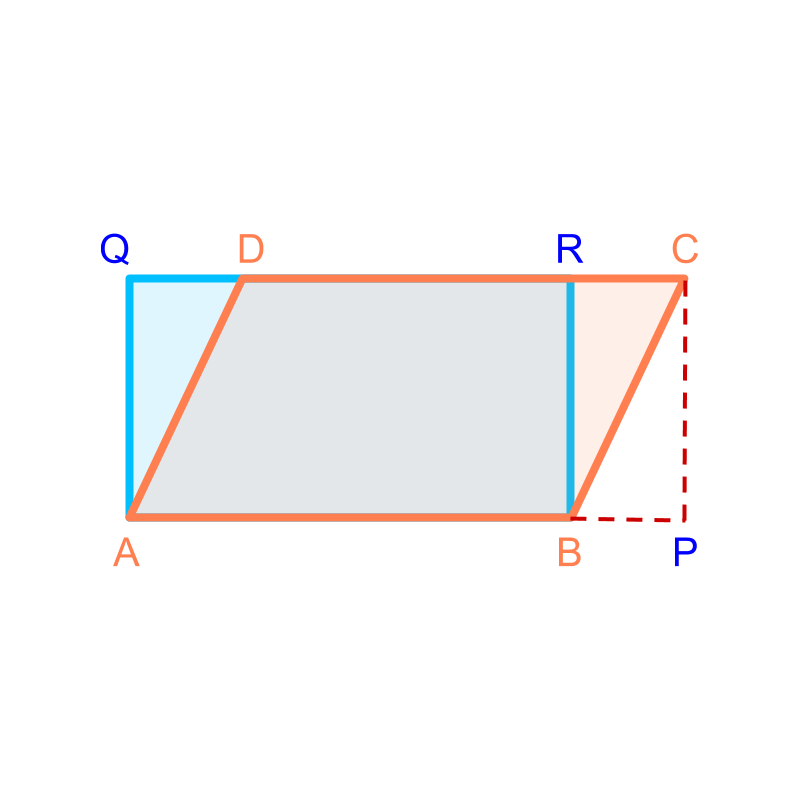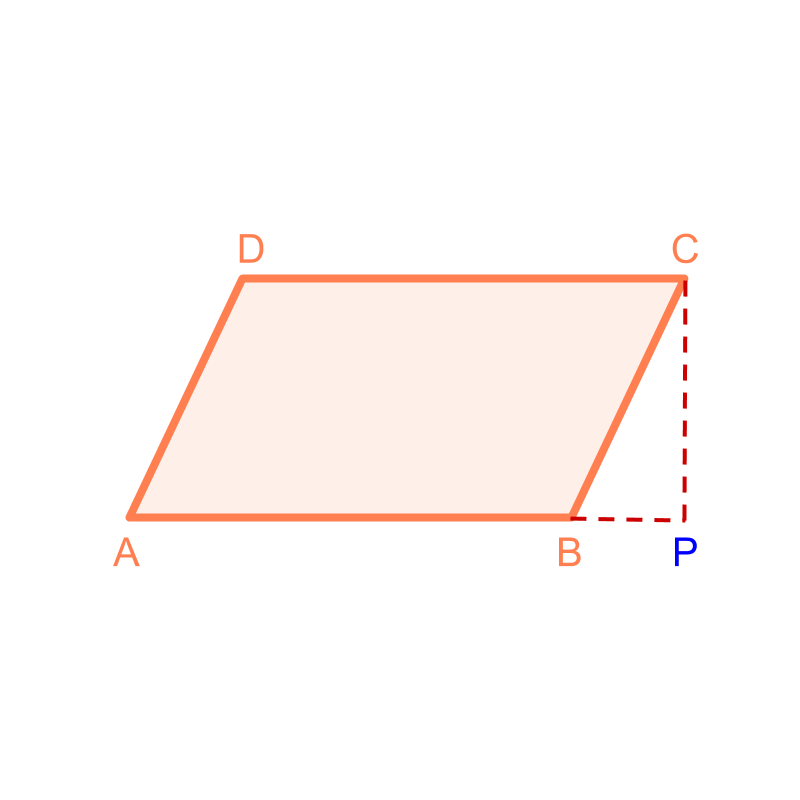
what you'll learn...
Overview
Measurement by Equivalence: Length, Area, or Volume can be measured by constructing an equivalent shape or object involving geometrical principles.

consider a problem

Consider the shape given in the figure. It is a parallelogram of base centimeter and height centimeter. To find the area of the parallelogram, the grid of unit squares is superimposed and the number of unit squared are counted. Since unit-squares will not fit exactly at the vertices, only approximate area can be computed.
equivalence

A rectangle of length cm and width cm is shown in blue. Consider the region and the region . The area of these two triangles are equal.
The area of the parallelogram is sum of areas of the region and . This can be equivalently given as sum of areas of the region and .
This implies that "area of the parallelogram equals the area of the rectangle".
summary
Measurement by Equivalence: Length, Area, or Volume can be measured by constructing an equivalent shape or object involving geometrical principles.
 This method suits best for
This method suits best for
• area of plane figures of curved sides or curved surfaces
• volume of solid figures of curved edges or curved faces
Outline
The outline of material to learn Mensuration : Length, Area, and Volume is as follows.
Note 1: click here for the detailed overview of Mensuration High
Note 2: click here for basics of mensuration, which is essential to understand this.
• Basics of measurement
→ Summary of Measurement Basics
→ Measurement by superimposition
→ Measurement by calculation
→ Measurement by equivalence
→ Measurement by infinitesimal pieces
→ Cavalieri's Principle (2D)
→ Cavalieri's Principle (3D)
• Perimeter & Area of 2D shapes
→ Circumference of Circles
→ Area of Circles
• Surface area & Volume of 3D shapes
→ Prisms : Surface Area & Volume
→ Pyramids : Surface Area & Volume
→ Cone : Surface Area & Volume
→ Sphere : Surface Area & Volume
• Part Shapes
→ Understanding part Shapes
→ Circle : Sector and Segment
→ Frustum of a Cone